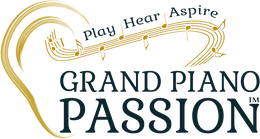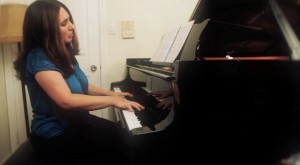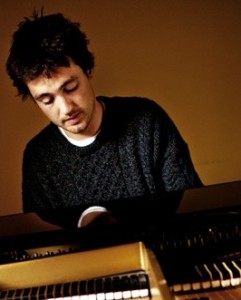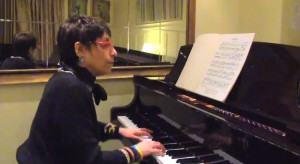The song “Suzanne” by Leonard Cohen is not the usual fare for GRAND PIANO PASSION™. Yet I found myself admiring the song’s seductive, haunting quality when I researched this mini-documentary on the making of The Cohen Variations.
When the concert pianist Simone Dinnerstein and the New York composer Daniel Felsenfeld discovered they both loved the song “Suzanne,” Simone commissioned a piano solo. Danny called his creation The Cohen Variations, a witty nod to Bach’s Goldberg Variations, and Ms. Dinnerstein recorded the music for her album, Night.
In our mini-documentary, we explore the making of The Cohen Variations, which fuses elements of classical piano music—counterpoint, inner voices, and variations—with Leonard Cohen’s tribute to his muse, Suzanne.
Note that to watch the full piano solo, see our exclusive video of Simone Dinnerstein playing the music in her home studio.
Simone Dinnerstein and the Song “Suzanne”
The chemistry of Simone and Danny’s friendship comes through when they reminisce about how their mutual love of the rock song “Suzanne” sparked the creation of The Cohen Variations. They point out the difficulties—Simone says there’s something even ludicrous—of making a concert piece from a song in which the lyrics’ poetry is so central. I was surprised when counterpoint, which I usually associate with Bach, emerged as one of the ways that Danny captured the song’s original poetry.
Variations in The Cohen Variations
The idea of variations is an aspect of classical piano music that until recently I understood at a surface level but did not have deep in my bones. The documentary makes the concept of variations easily digestible, but is the piece really a set of variations in the classical sense? Their discussion reveals the many-layered answer to that question.
Nocturnes and The Cohen Variations
Both Simone and Danny declare that The Cohen Variations is very much a Nocturne. As someone whose heart keeps on returning to the Chopin Nocturnes—this makes me part of a large tribe of adult piano students with a similar predilection—I very much enjoyed their discussion of the qualities of The Cohen Variations that make it feel like music that a pianist would play at night.
Inner Voices in Chopin, Bach, and… Felsenfeld
For Simone, one of the world’s foremost Bach interpreters, the inner voices of The Cohen Variations are often the most interesting part of the music. When we filmed this section, I was on the edge of my seat while Simone explained how not only The Cohen Variations but also Chopin’s Nocturnes are contrapuntal in their own way.
Advice for Pianists of All Ages
To wrap up, Danny and Simone give advice for adult piano students who might want to tackle this music as part of their study (the score is available for purchase via email inquiry). “Don’t be afraid to just play with it,” Danny says. The challenge, Simone says, is “how to create different colors.” Their insights inspire pianists of all ages and levels to find their voices at the piano.




Ironic that the documentary doesn’t have closed captions, since it is for a hearing impaired audience. I, for one , can hear them, but I have no idea what they are saying, and it’s too bad because I am doing the same thing with my own composition – improvisation teacher.
Kathryn, thank you for writing. All videos on Grand Piano Passion have captions. I really can’t hear videos without captions either. Once you play the video, click on the caption symbol in the upper right hand corner. It looks like a talk bubble you might see in a cartoon. They are called subtitles, and select in English. I hope you enjoy the video!